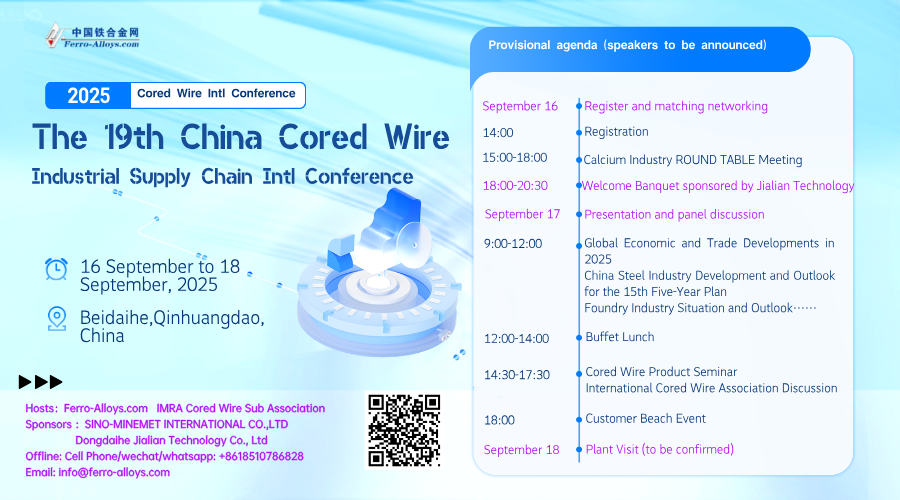[ferro-alloys.com]US iron ore miner Cleveland-Cliffs, which only produces pellets, expects high-grade iron ore products to increasingly carry premiums over medium and lower grade ores, as China's steel industry demands more premium raw materials.
"So long story short, the shift toward higher grade is there to stay. The shift toward pellets is there to stay," he said.
Pellet premiums will continue to reflect high demand for pellets for the foreseeable future, Cliffs said. The company is seeking to produce higher grades from the region's taconite resources, and DR-grade pellets to meet its new HBI plant to start in 2020.
Cliffs said its fluxed Mustang pellet has seen greater demand and sales to other customers.
The "superflux" pellet was developed at a specific, proprietary chemistry that is required for ArcelorMittal's Indiana Harbor blast furnace No. 7 in East Chicago, Cliffs told S&P Global Platts a year ago. The steel producer's No. 7 BF is the largest in the western hemisphere, capable of making nearly 12,000 st/day of hot metal. The flagship grade, according to Cliffs, is a higher cost pellet to produce compared to higher silica acid pellets.
Cliffs' pellet sales contracts using year-to-date averages have deemphasized the influence of the IODEX 62% Fe fines CFR China index as a metric and magnified the impact of the Atlantic iron ore pellet premium, which Cliffs said was $58/dmt for the year to date, and US HRC steel prices, at $826/st. That has come after China's main iron ore fines import prices fell in the second quarter from the preceding period, while premiums for 65% Fe fines index, and pellets rose.
"The pellet premium in China was $18 not too long ago, then went to $35, then went to $45, then went to $52, then went to $62.50, and that's what it is right now, that's China," Goncalves said. He illustrated Chinese demand growth over the period led premiums up, as more mills converted to imported pellets. US Steel Keetac in Minnesota was expected to export less pellets as a result of increased US domestic use of pellets as more furnaces are relit, Cliffs said. This may contribute to keep the seaborne market tight through the shipping season in the Great Lakes, which runs until the fall, before ice disrupts flows.
Cliffs drew parallels with iron ore demand by type and global steel ratios.
As China accounts for around half of world steel output, usage of pellets and high grade iron ore will grow to emulate usage in steel markets such as Europe and the US, where higher quality iron ores already dominate the load. Medium grade fines pricing will drag, and Australian iron ore miners BHP Billiton and Rio Tinto are finding lower margins for their iron ore products compared to high grades, following what happened to Fortescue, he said.
- [Editor:王可]



 Save
Save Print
Print Daily News
Daily News Research
Research Magazine
Magazine Company Database
Company Database Customized Database
Customized Database Conferences
Conferences Advertisement
Advertisement Trade
Trade














 Online inquiry
Online inquiry Contact
Contact

Tell Us What You Think